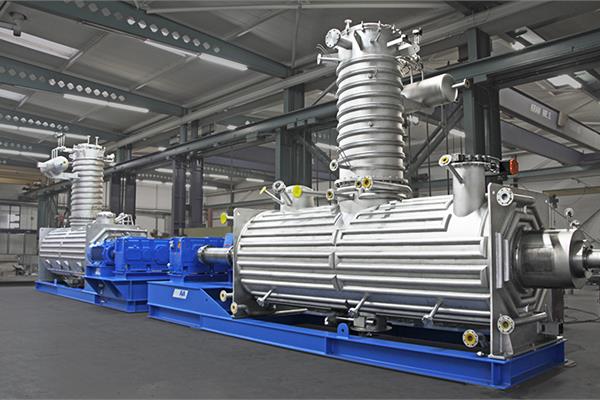
In the production of flame retardants, a low residual water content in the ppm range plays a decisive role. AVA has developed a flame-retardant dryer that enables the reliable and efficient production of flame retardants in batch sizes up to 20.000 litres.
Many plastic materials are hydrophobic. If water molecules are trapped in the polymer matrix, they will not bind to the polymer and have a negative impact on the mechanical properties of the material. Therefore, flame retardants added to the plastic products shall have possibly low moisture content; often the specification is to reach ppm level. To reach such low moisture content within reasonable drying time, the vacuum drying process shall be carried out under high vacuum and the product temperature shall be as high as the product allows. For some organophosphorus compounds for example, process temperature over 300 °C is not unusual.
The AVA HTC-VT type vacuum dryer can be well adapted to this application. The dryer is equipped with a heating jacket, which can be heated with thermal oil to max. 350 °C, meanwhile the pressure in the dryer is reduced to < 100 mbar abs. by means of a vacuum pump, to accelerate the evaporation of the moisture. In the HTC-VT dryer the product is brought into a mechanical turbulence, operating on the hurling and whirling principle. That causes an intensive heat and material exchange. The entire product is dried homogeneously within a short period of time. The frequent load alternation (temperature as well as pressure) is a big challenge for the construction of the dryer, in particular for industrial scale machines. AVA supports customers with its comprehensive process and constructional knowledge to find the optimal solution for the drying of the flame retardants.
Flame retardants are chemicals which are added to flammable materials, e.g., plastics and textiles, in order to prevent or slow the further development of the flame in case of fire. Beside inorganic flame retardant (metal oxides and salts), organohalogen and organophosphorus compounds are the most important types of flame retardants. In comparison to the organohalogen compounds, the organophosphorus compounds have higher heat resistance and higher thermal stability. Especially in Europe, organophosphorus compounds are preferred.